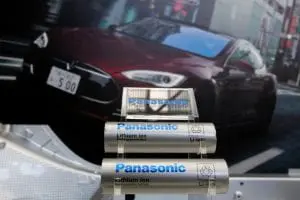New research from Stanford university has demonstrated a promising new take on the lithium metal battery that could increase electric vehicle driving range.
Current electric vehicles, laptops and other rechargeable devices are powered by lithium-ion batteries that commonly use a graphite anode, a heavy and expensive but – until now – a necessary battery component.
Lithium metal batteries offer a lighter option as they replace the graphite with lithium metal which is able to store more energy, which for electric vehicles has the benefit of dramatically increasing driving range or reducing battery weight as less cells are required for the same range.
While lithium metal batteries can store about double the energy of standard lithium-ion batteries, they have inherent stability issues that mean they are unable to hold a charge after just 30 cycles, meaning they are currently only useful as non-rechargeable batteries.
The new research is significant because it uses a new electrolyte materials that allows increased stability and therefore longer cycling, which if made commercially available could mean lithium metal could be used as rechargeable batteries.
“Most electric cars run on lithium-ion batteries, which are rapidly approaching their theoretical limit on energy density,” said study co-author Yi Cui, professor of materials science and engineering and of photon science at the SLAC National Accelerator Laboratory in a statement.
“Our study focused on lithium metal batteries, which are lighter than lithium-ion batteries and can potentially deliver more energy per unit weight and volume.”
In a new study published in Nature Energy on Monday, Stanford University researchers describe a novel electrolyte design that radically increases the stability of the lithium metal material potentially making it a serious contender for powering electric vehicles and other devices.
“Lithium metal batteries are very promising for electric vehicles, where weight and volume are a big concern,” said study co-author Zhenan Bao, the K.K. Lee Professor in the School of Engineering in a statement.
“But during operation, the lithium metal anode reacts with the liquid electrolyte. This causes the growth of lithium microstructures called dendrites on the surface of the anode, which can cause the battery to catch fire and fail.”
To read the full version of this story – and view the photo gallery – on RenewEconomy’s electric vehicle dedicated site, The Driven, click here…
RenewEconomy and its sister sites One Step Off The Grid and The Driven will continue to publish throughout the Covid-19 crisis, posting good news about technology and project development, and holding government, regulators and business to account. But as the conference market evaporates, and some advertisers pull in their budgets, readers can help by making a voluntary donation here to help ensure we can continue to offer the service free of charge and to as wide an audience as possible. Thankyou for your support.










